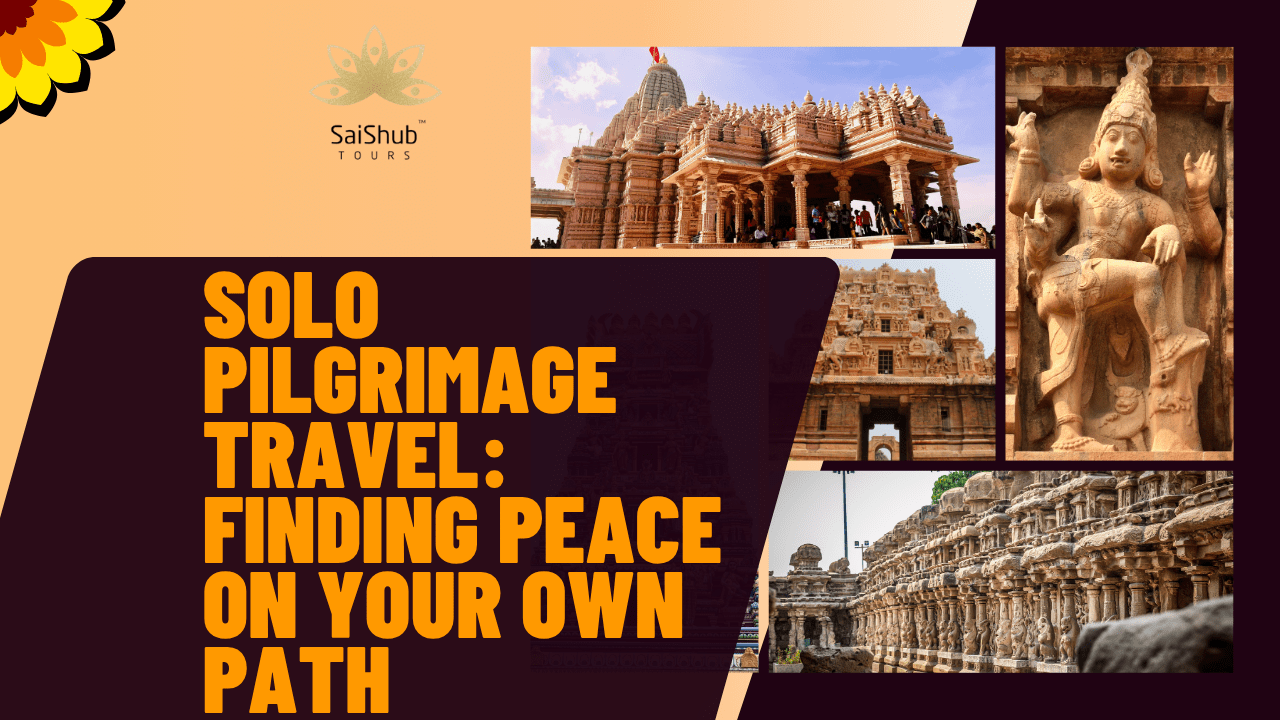
In a world constantly buzzing with noise, deadlines, and distractions, more and more people are choosing to walk a quieter road — one that leads inward. Solo pilgrimage travel is rising as a deeply personal journey, where the destination isn’t just a sacred site, but the self. Whether it’s trekking up to Kedarnath, meditating in Tiruvannamalai, or sitting in silence at Bodh Gaya, solo pilgrimages offer a rare gift: peace, purpose, and profound clarity.
1. Why Travel Solo for a Pilgrimage?
Unlike group tours or family vacations, solo pilgrimages aren’t about fun or photos. They’re about self-reflection, healing, and inner connection. Travelling alone allows you to:
Move at your own pace
Reflect without distraction
Connect deeply with sacred spaces
Experience spirituality on your own terms
Without conversations or companions, every moment becomes more intentional — every sunrise, temple bell, and prayer feels personal.
2. India: The Ideal Destination for Solo Pilgrimage
India, with its rich spiritual landscape and welcoming culture, is uniquely suited for solo pilgrims. Some top destinations for solo spiritual travel include:
Tiruvannamalai: Climb Arunachala, visit Ramana Ashram, and experience the power of silence.
Rishikesh: Meditate by the Ganga, attend Ganga Aarti, and join yoga sessions.
Bodh Gaya: Sit under the Bodhi Tree and reflect on your own awakening.
Varanasi: Witness life and death coexisting, and find deeper meaning in each ritual.
Sarnath: Where Buddha first taught the Dharma, perfect for peaceful contemplation.
Each of these places offers safety, serenity, and spiritual depth for solo seekers.
3. Preparing for a Solo Pilgrimage
Though liberating, solo travel also requires mindful planning. Here are a few tips:
Research your destination: Know the local customs, weather, and temple timings.
Pack light but right: Carry spiritual texts, a journal, comfortable clothes, and essentials.
Stay in ashrams or dharmashalas: They offer basic comfort and a peaceful environment.
Keep family informed: Share your itinerary and check in regularly.
Trust your instincts: If a place or person doesn’t feel right, walk away.
Solo pilgrimage is about shedding burdens — so travel light, both physically and emotionally.
4. Silence: The Real Companion
One of the most transformative aspects of a solo pilgrimage is embracing silence. Without conversations, music, or devices constantly buzzing, you begin to hear something far more valuable — your own thoughts.
Silence encourages self-awareness.
It opens the door to inner healing.
It allows you to listen — to nature, chants, prayers, and your own soul.
Many pilgrims who travel alone return saying, “I met myself on the journey.”
5. Sacred Practices to Try on Your Journey
While each destination offers unique traditions, some spiritual practices can deepen your solo pilgrimage:
Japa (mantra chanting)
Walking meditation (like Girivalam around Arunachala)
Daily journaling
Seva (voluntary service at temples or ashrams)
Silent observation of rituals without photography or distraction
Engaging in these helps you truly absorb the spiritual essence of the place and yourself.
6. Stories from the Path
Many pilgrims share how their solo journey transformed them:
A woman from Mumbai found clarity about leaving her high-stress job after a 5-day silent retreat in Rishikesh.
A retiree from Chennai experienced deep peace walking barefoot during the Arunachala Girivalam under the full moon.
A traveler from Australia found comfort and closure after a personal loss by meditating daily in Bodh Gaya.
Each path is different, but the destination is the same — inner peace.
FAQ
Yes, many pilgrimage destinations are well-connected and safe. It’s advised to stay in trusted accommodations and inform family about your itinerary.
Tiruvannamalai, Rishikesh, Varanasi, Shirdi, and Bodh Gaya are some serene and spiritually rich destinations ideal for solo pilgrims.
Plan your route in advance, pack light, carry essentials like ID, cash, prayer items, and keep emergency contacts handy. Also, stay spiritually focused.
Absolutely. Many solo travelers report deep personal growth, clarity, and peace during their time alone on spiritual paths.
Yes, several ashrams in Rishikesh, Kerala, and Tamil Nadu (like Ramana Maharshi Ashram) offer welcoming environments for solo spiritual seekers.
Conclusion
Solo pilgrimage travel isn’t about isolation — it’s about reconnection. With yourself. With the divine. And with life itself.
When you walk alone on a sacred path, you begin to realise that every step you take isn’t just toward a temple or shrine — it’s a step back home, to the soul.
So pack light, trust the journey, and let the silence speak.

